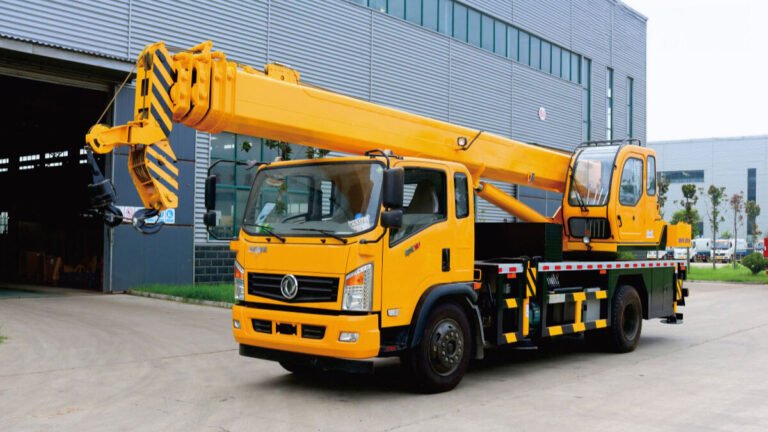How Much Does Surfboard Weigh: Guide to Types and Performance
When you’re gearing up to hit the waves, understanding the weight of your surfboard is crucial. The weight of a surfboard isn’t just a number; it significantly influences how you ride. Whether you’re a seasoned pro or just starting out, knowing how much your board weighs can make all the difference in your surfing experience.
Surfboards come in various shapes and sizes, and their weight can range from as light as 6 pounds to as heavy as 15 pounds. A lighter board, like a shortboard, offers agility and speed, perfect for advanced surfers looking to perform quick maneuvers. On the flip side, heavier boards, such as longboards, provide the stability and ease of paddling that beginners crave.
By understanding these weight dynamics, you can choose a surfboard that matches your skill level and surfing style, ensuring you make the most of every wave.
Key Takeaways
- Surfboard Weight Importance: Surfboard weight significantly impacts your surfing experience, influencing maneuverability, stability, and performance on the waves. Understanding this can help you make informed decisions when selecting a board.
- Weight Ranges by Board Type: Shortboards typically weigh 5 to 8 pounds, offering agility for advanced surfers, while longboards weigh 15 to 30 pounds, providing stability and ease for beginners. Foam boards range from 10 to 20 pounds, ideal for beginners’ buoyancy needs.
- Factors Affecting Weight: The weight is influenced by materials (fiberglass, carbon fiber, foam), dimensions (length, width, volume), and additional features like fins and traction pads.
- Impact on Surfing Performance: A lighter board enhances maneuverability essential for quick turns, while a heavier board offers greater stability, aiding in paddling power and control in rough conditions.
- Weight Measurement Techniques: Accurately measure your surfboard’s weight using a bathroom scale, checking manufacturer specifications, or consulting a local surf shop for precise measurements.
- Tips for Managing Weight: Opt for lighter materials, maintain a minimalist design, regularly clean the board, and select lightweight accessories to improve maneuverability and enhance your surfing experience.
Understanding Surfboard Weight
The weight of a surfboard is a critical factor in shaping your surfing experience, influencing performance and maneuverability. Whether you’re a seasoned pro seeking agility or a beginner looking for stability, understanding the weight dynamics of surfboards aids in making informed choices.

Types of Surfboards and Their Weights
- Shortboards range from 5 to 7 feet and weigh between 5 and 8 pounds. Ideal for advanced surfers, they provide agility for quick turns and aerial tricks.
- Longboards span 8 to 12 feet and weigh 8 to 15 pounds. Their size enhances stability and control, perfect for beginners or larger wave conditions.
- Soft Top Surfboards often used by beginners, are lighter and easier to handle, boosting confidence in early stages of learning.
- Maneuverability: Boards weighing 4 to 6 pounds offer superior maneuverability, crucial for executing intricate moves.
- Paddling and Speed: Heavier boards, often 10 to 15 pounds, enhance paddling power and maintain speed in rough conditions, allowing smooth rides in larger surf.
- Stability and Control: Heavier boards enhance stability, ensuring controlled surfing and reducing wipeouts.
Understanding these aspects ensures you select a board that complements your skill level and preferred wave conditions. Embrace a lighter board for fast, agile surfing, or a heavier board for a stable, controlled experience.
Factors Influencing Surfboard Weight
Various elements affect a surfboard’s weight, impacting your performance and the overall surfing experience. The material composition, size and shape, and additional accessories all play crucial roles in determining how heavy or light a board feels.
Material Composition
The materials used in constructing a surfboard significantly impact its weight. You encounter different materials like fiberglass, carbon fiber, and resin.
- Fiberglass or Carbon Fiber: These materials form the fiber matrix around the board. Depending on the type and quantity of fiberglass or carbon fiber used, the board’s weight fluctuates.
- Resin: The resin type, like epoxy, contributes to weight variation. A balanced ratio between fiber and resin ensures optimal strength and minimal weight.
- Foam Core: The foam within the surfboard core, such as polyurethane or EPS, heavily influences weight. Different foam types and densities directly correlate with the overall surfboard weight.
Size and Shape
Surfboard dimensions such as length, width, and volume affect its weight.
- Volume: Measured in liters, a surfboard’s volume determines its buoyancy, impacting weight significantly. Boards with higher volume generally weigh more due to increased material usage.
- Dimensions: Longer and wider boards naturally carry more weight compared to shorter ones. The thickness also contributes to how heavy a board feels.
Additional Accessories
Extra features on your surfboard can add weight.
- Fins: Essential for maneuverability, fins contribute to the overall weight. Larger or more numerous fins increase a board’s heaviness.
- Traction Pads: Used for grip, these pads add weight, affecting the board’s balance.
- Repairs and Modifications: Repairs and any additional modifications made over time may alter the original weight, affecting handling and performance.
Typical Weights of Common Surfboard Types
Understanding typical surfboard weights helps you choose the right board for your surfing style and experience. Each type of surfboard, from shortboards to longboards, offers unique attributes that cater to different skill levels and wave conditions.
Shortboards
Shortboards range between 5 and 7 feet and weigh approximately 5 to 8 pounds (2.3 to 3.6 kilograms). Designed for high performance, they allow quick maneuvers and sharp turns. If you prefer speed and agility in powerful waves, shortboards are ideal but require experience to handle due to their lack of buoyancy.
Longboards
Longboards, measuring 8 to 14 feet, typically weigh between 15 and 30 pounds (6.8 to 13.6 kilograms). With increased stability and ease of paddling, they suit beginners or those enjoying smoother, controlled rides. Longboards excel in small or less powerful waves, offering a classic surfing experience.
Foam Boards
Foam boards, or softboards, weigh between 10 and 20 pounds (4.5 to 9 kilograms) and range from 6 to 8 feet. Their lightweight nature and buoyancy make them perfect for beginners, enhancing confidence as you learn. They are forgiving and durable, ideal for casual, recreational surfing.
Impact of Surfboard Weight on Performance
Surfboard weight plays a crucial role in influencing your surfing experience. It dictates how well you maneuver on the waves and can affect your overall enjoyment of the sport. The right weight can significantly enhance your performance or hinder your progress if not aligned with your skill level and style.
1. Lighter Boards: Enhanced Maneuverability
Lighter boards, typically weighing between 4 and 6 pounds, offer superior maneuverability. They’re favored by advanced surfers who thrive on executing quick turns and aerial tricks. These boards allow for rapid adjustments and agile movements, making them ideal if you seek challenge and excitement on the waves.
2. Heavier Boards: Stability and Control
Heavier boards, ranging from 10 to 15 pounds, excel in providing stability and control. They’re perfect if you’re a beginner or riding larger waves requiring a steady balance. Their increased weight aids in paddling power, helping you catch waves more easily and maintain speed, especially in rougher conditions.
3. Influence of Surfboard Design
The design aspects, such as the board’s length and volume, heavily impact its weight. Longer and thicker boards generally weigh more—they’re suitable if you prioritize stability over maneuverability. Contrarily, a board with a flatter rocker and fuller rails increases stability but adds to the weight, affecting agility.
4. Material Composition
Material composition is a vital factor in determining surfboard weight. Traditional materials like polyurethane foam and fiberglass add weight, while modern constructions employ lighter materials such as EPS foam and carbon fiber. These innovative materials reduce weight without compromising strength, offering you a balanced board for diverse conditions.
5. Practical Applications
Understanding how surfboard weight affects performance allows you to choose equipment that complements your surfing goals. Whether you prefer cutting-edge shortboards for high performance or heavier longboards for leisurely surfing, selecting a board aligned with your skills and preferences enhances your experience on the water.
Methods to Measure Your Surfboard’s Weight
Determining your surfboard’s weight accurately helps tailor your surfing experience to your needs. Here are simple and effective methods to measure it:
- Use a Bathroom Scale: This is one of the easiest ways. Simply step onto the scale holding your surfboard, note the combined weight, then subtract your body weight. This method provides a quick approximation of your surfboard’s weight.
- Check Manufacturer Specifications: Many surfboard manufacturers list the weight of their boards in the product specifications. If this data is available, it ensures accuracy without needing to physically weigh the board.
- Visit a Local Surf Shop: Many surf shops have specialized scales specifically for weighing surfboards. This option yields a precise measurement and offers a chance to consult experts.
Understanding your surfboard’s weight allows for a better selection process, matching specific surfing conditions and personal preferences.
Tips for Managing Surfboard Weight
Optimizing surfboard weight enhances your surfing experience. Consider these actionable tips to manage the weight effectively:
- Select Lighter Materials: Choose surfboards made with EPS foam or epoxy resin instead of traditional fiberglass and polyurethane. These materials reduce weight without sacrificing strength, improving overall maneuverability.
- Opt for Minimalist Design: Avoid extra decorations or bulky additions not contributing to performance. A streamlined design keeps the board lightweight and responsive.
- Maintain Your Board: Regular cleaning helps prevent excess wax buildup and water retention, both of which add unnecessary weight. A well-maintained board stays agile in the water.
- Choose Lightweight Accessories: Attach lighter leashes and fins to keep added weight to a minimum. This ensures your board remains swift and nimble during rides.
Understanding the influence of surfboard weight on performance allows you to make informed choices. By applying these tips, you can enhance maneuverability, control, and overall surfing experience.
Conclusion
Understanding surfboard weight is essential for tailoring your surfing experience to your skill level and style. By considering factors like material composition, size, and additional features, you can make informed decisions that enhance your time on the waves. Whether you’re seeking agility with a lighter board or stability with a heavier one, knowing how weight affects performance allows you to choose the right equipment. Remember to measure your board’s weight accurately and apply weight management tips to optimize maneuverability and control. With the right surfboard, you’ll enjoy a more fulfilling and exhilarating surfing adventure.







